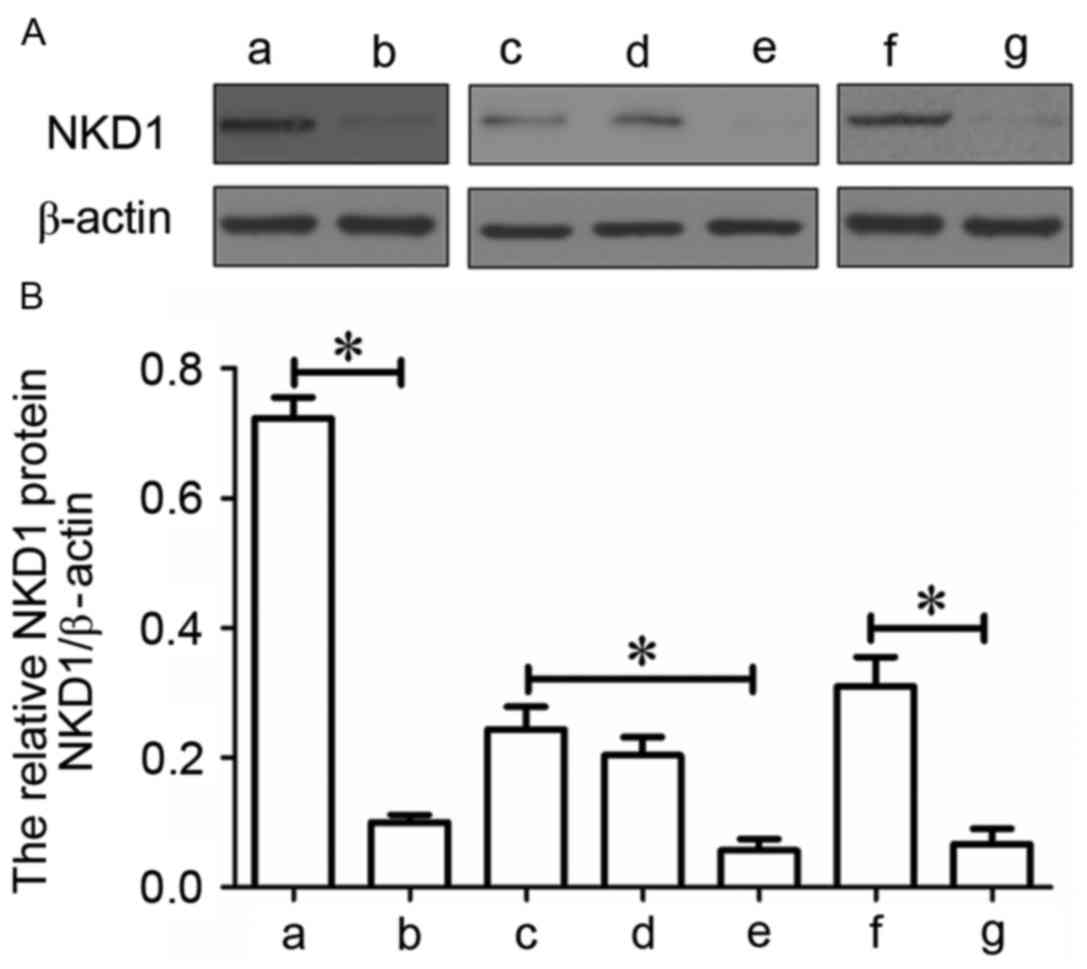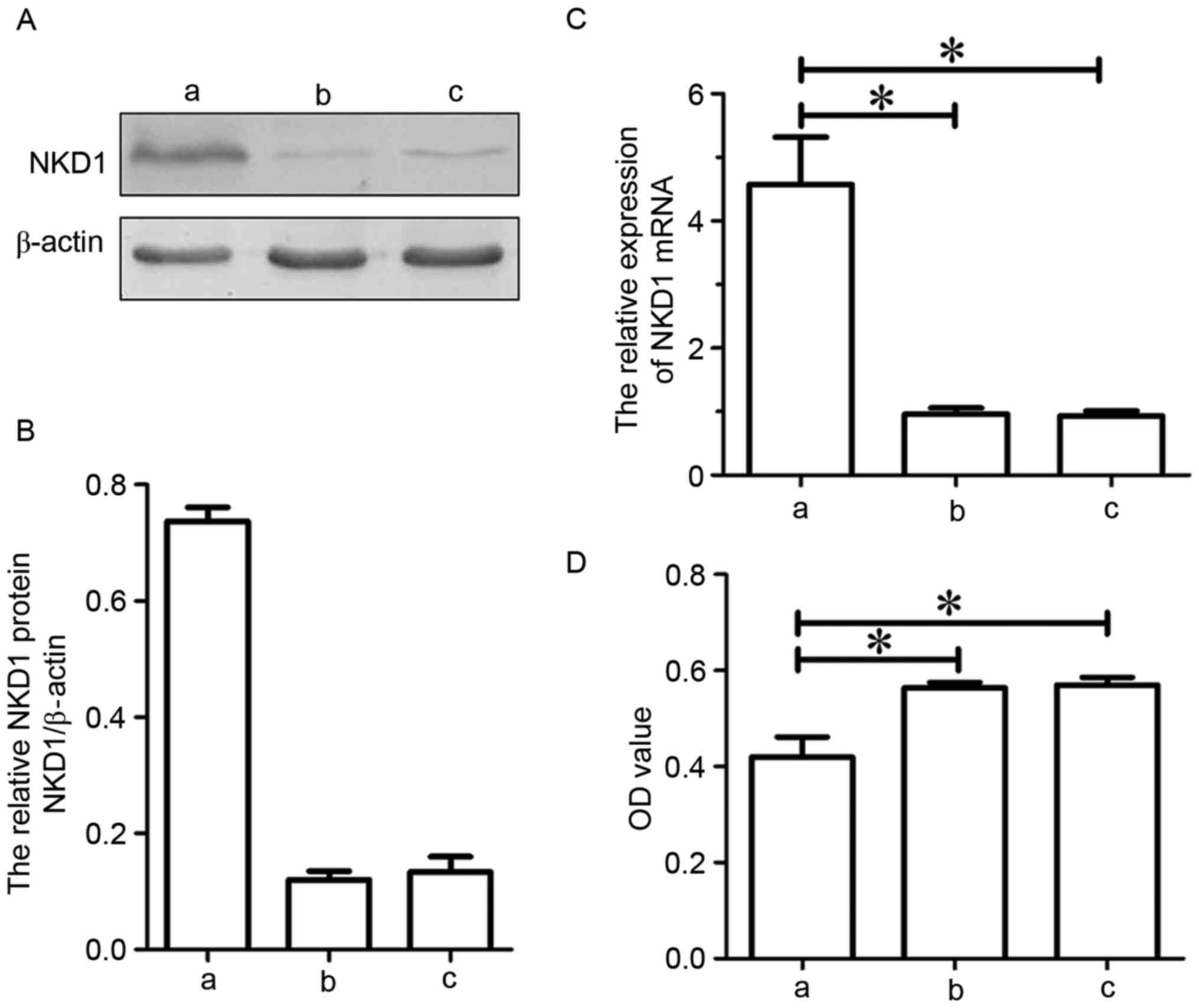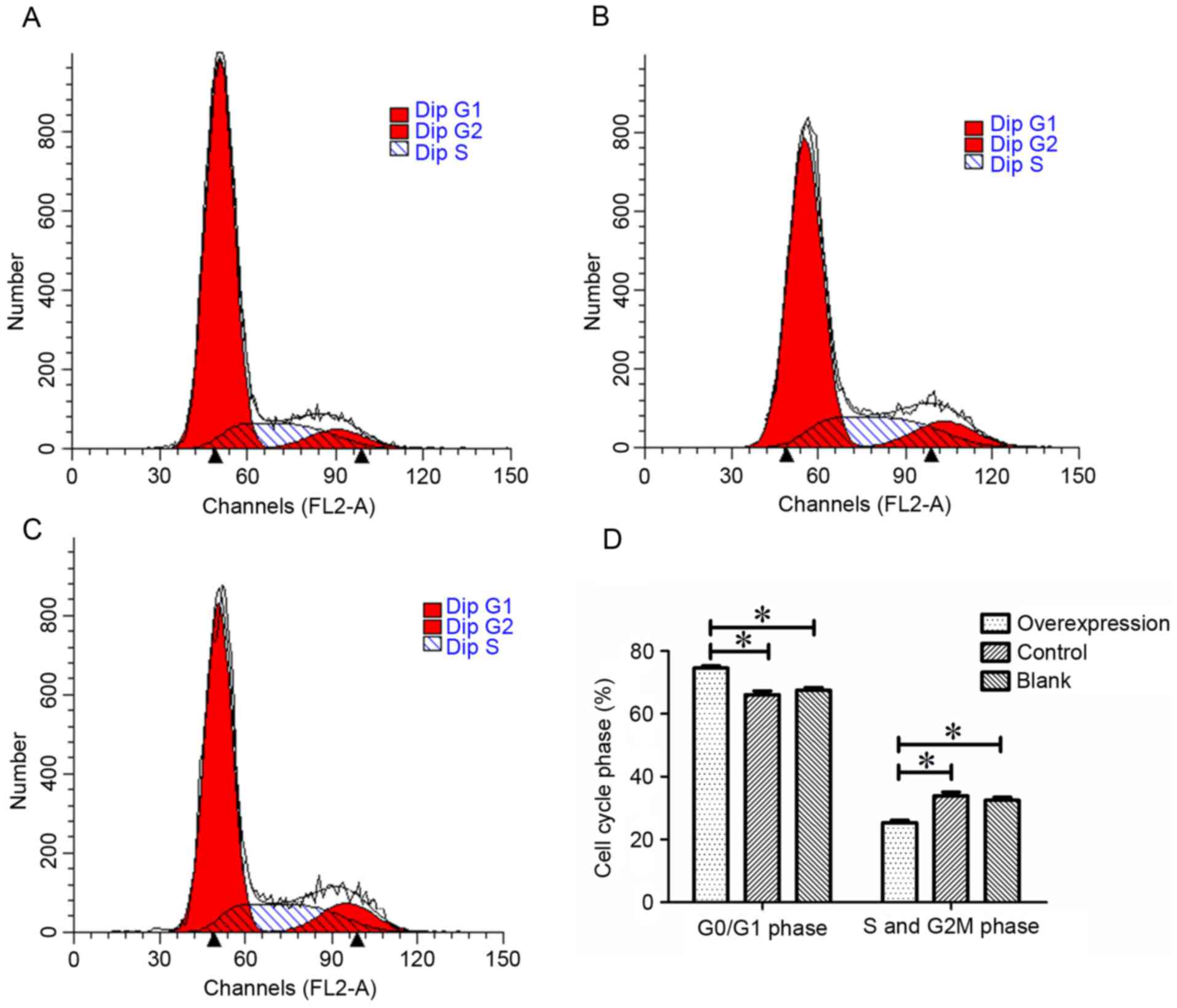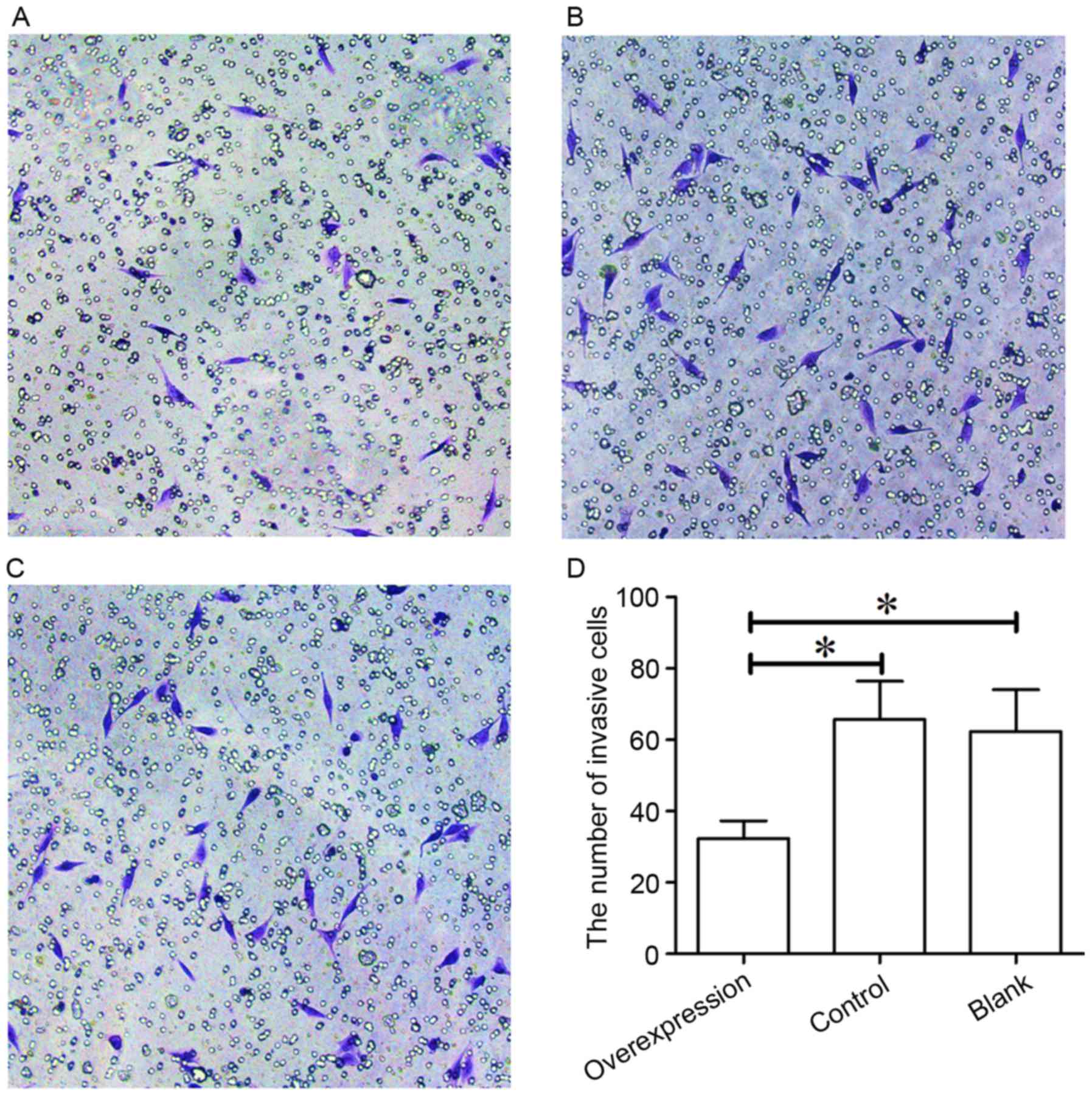|
1
|
Sampson VB, Yoo S, Kumar A, Vetter NS and
Kolb EA: MicroRNAs and potential targets in osteosarcoma: Review.
Front Pediatr. 3:692015. View Article : Google Scholar : PubMed/NCBI
|
|
2
|
Endo-Munoz L, Evdokiou A and Saunders NA:
The role of osteoclasts and tumour-associated macrophages in
osteosarcoma metastasis. Biochim Biophys Acta. 1826:434–442.
2012.PubMed/NCBI
|
|
3
|
Lamora A, Talbot J, Bougras G, Amiaud J,
Leduc M, Chesneau J, Taurelle J, Stresing V, Le Deley MC, Heymann
MF, et al: Overexpression of smad7 blocks primary tumor growth and
lung metastasis development in osteosarcoma. Clin Cancer Res.
20:5097–5112. 2014. View Article : Google Scholar : PubMed/NCBI
|
|
4
|
Kimura H, Tsuchiya H, Shirai T, Nishida H,
Hayashi K, Takeuchi A, Ohnari I and Tomita K: Caffeine-potentiated
chemotherapy for metastatic osteosarcoma. J Orthop Sci. 14:556–565.
2009. View Article : Google Scholar : PubMed/NCBI
|
|
5
|
He JP, Hao Y, Wang XL, Yang XJ, Shao JF,
Guo FJ and Feng JX: Review of the molecular pathogenesis of
osteosarcoma. Asian Pac J Cancer Prev. 15:5967–5976. 2014.
View Article : Google Scholar : PubMed/NCBI
|
|
6
|
Poletajew S, Fus L and Wasiutyński A:
Current concepts on pathogenesis and biology of metastatic
osteosarcoma tumors. Ortop Traumatol Rehabil. 13:537–545. 2011.(In
English, Polish). View Article : Google Scholar : PubMed/NCBI
|
|
7
|
Lv ZD, Zhang L, Liu XP, Jin LY, Dong Q, Li
FN, Wang HB and Kong B: NKD1 down-regulation is associated with
poor prognosis in breast invasive ductal carcinoma. Int J Clin Exp
Pathol. 8:4015–4021. 2015.PubMed/NCBI
|
|
8
|
Jia Y, Cao B, Yang Y, Linghu E, Zhan Q, Lu
Y, Yu Y, Herman JG and Guo M: Silencing NKD2 by promoter region
hypermethylation promotes gastric cancer invasion and metastasis by
up-regulating SOX18 in human gastric cancer. Oncotarget.
6:33470–33485. 2015. View Article : Google Scholar : PubMed/NCBI
|
|
9
|
Zhao S, Kurenbekova L, Gao Y, Roos A,
Creighton CJ, Rao P, Hicks J, Man TK, Lau C, Brown AM, et al: NKD2,
a negative regulator of Wnt signaling, suppresses tumor growth and
metastasis in osteosarcoma. Oncogene. 34:5069–5079. 2015.
View Article : Google Scholar : PubMed/NCBI
|
|
10
|
Angonin D and Van Raay TJ: Nkd1 functions
as a passive antagonist of Wnt signaling. PLoS One. 8:e746662013.
View Article : Google Scholar : PubMed/NCBI
|
|
11
|
Li Q, Ishikawa TO, Miyoshi H, Oshima M and
Taketo MM: A targeted mutation of Nkd1 impairs mouse
spermatogenesis. J Biol Chem. 280:2831–2839. 2005. View Article : Google Scholar : PubMed/NCBI
|
|
12
|
Guo J, Cagatay T, Zhou G, Chan CC, Blythe
S, Suyama K, Zheng L, Pan K, Qian C, Hamelin R, et al: Mutations in
the human naked cuticle homolog NKD1 found in colorectal cancer
alter Wnt/Dvl/beta-catenin signaling. PLoS One. 4:e79822009.
View Article : Google Scholar : PubMed/NCBI
|
|
13
|
Ahn S, Hwangbo W, Kim H and Kim CH: Naked
cuticle Drosophila 1 expression in histologic subtypes of
small adenocarcinoma of the lung. Korean J Pathol. 47:211–218.
2013. View Article : Google Scholar : PubMed/NCBI
|
|
14
|
Zhang S, Wang Y, Dai SD and Wang EH:
Down-regulation of NKD1 increases the invasive potential of
non-small-cell lung cancer and correlates with a poor prognosis.
BMC Cancer. 11:1862011. View Article : Google Scholar : PubMed/NCBI
|
|
15
|
Livak KJ and Schmittgen TD: Analysis of
relative gene expression data using real-time quantitative PCR and
the 2(-Delta Delta C(T)) method. Methods. 25:402–408. 2001.
View Article : Google Scholar : PubMed/NCBI
|
|
16
|
He L, Yang Z, Zhou J and Wang W: The
clinical pathological significance of FRAT1 and ROR2 expression in
cartilage tumors. Clin Transl Oncol. 17:438–445. 2015. View Article : Google Scholar : PubMed/NCBI
|
|
17
|
Larraguibel J, Weiss AR, Pasula DJ,
Dhaliwal RS, Kondra R and Van Raay TJ: Wnt ligand-dependent
activation of the negative feedback regulator Nkd1. Mol Biol Cell.
26:2375–2384. 2015. View Article : Google Scholar : PubMed/NCBI
|
|
18
|
Cheng AS, Lau SS, Chen Y, Kondo Y, Li MS,
Feng H, Ching AK, Cheung KF, Wong HK, Tong JH, et al: EZH2-mediated
concordant repression of Wnt antagonists promotes
β-catenin-dependent hepatocarcinogenesis. Cancer Res. 71:4028–4039.
2011. View Article : Google Scholar : PubMed/NCBI
|
|
19
|
Stewart DJ: Wnt signaling pathway in
non-small cell lung cancer. J Natl Cancer Inst. 106:djt3562014.
View Article : Google Scholar : PubMed/NCBI
|
|
20
|
Cai J, Feng D, Hu L, Chen H, Yang G, Cai
Q, Gao C and Wei D: FAT4 functions as a tumour suppressor in
gastric cancer by modulating Wnt/β-catenin signalling. Br J Cancer.
113:1720–1729. 2015. View Article : Google Scholar : PubMed/NCBI
|
|
21
|
Ye GD, Sun GB, Jiao P, Chen C, Liu QF,
Huang XL, Zhang R, Cai WY, Li SN, Wu JF, et al: OVOL2, an inhibitor
of WNT signaling, reduces invasive activities of human and mouse
cancer cells and is downregulated in human colorectal tumors.
Gastroenterology. 150:659–671.e16. 2016. View Article : Google Scholar : PubMed/NCBI
|
|
22
|
Fan Y and Guo Y: Knockdown of eIF3D
inhibits breast cancer cell proliferation and invasion through
suppressing the Wnt/β-catenin signaling pathway. Int J Clin Exp
Pathol. 8:10420–10427. 2015.PubMed/NCBI
|
|
23
|
Deng Z, Wang L, Hou H, Zhou J and Li X:
Epigenetic regulation of IQGAP2 promotes ovarian cancer progression
via activating Wnt/β-catenin signaling. Int J Oncol. 48:153–160.
2016.PubMed/NCBI
|
|
24
|
Zhang S, Li J, Yin ZY, Liu PG, Zhao WX,
Xie CR, Zhao BX and Wang XM: Expression pattern and
clinicopathologic significance of NKD1 in human primary
hepatocellular carcinoma. APMIS. 123:315–320. 2015. View Article : Google Scholar : PubMed/NCBI
|














